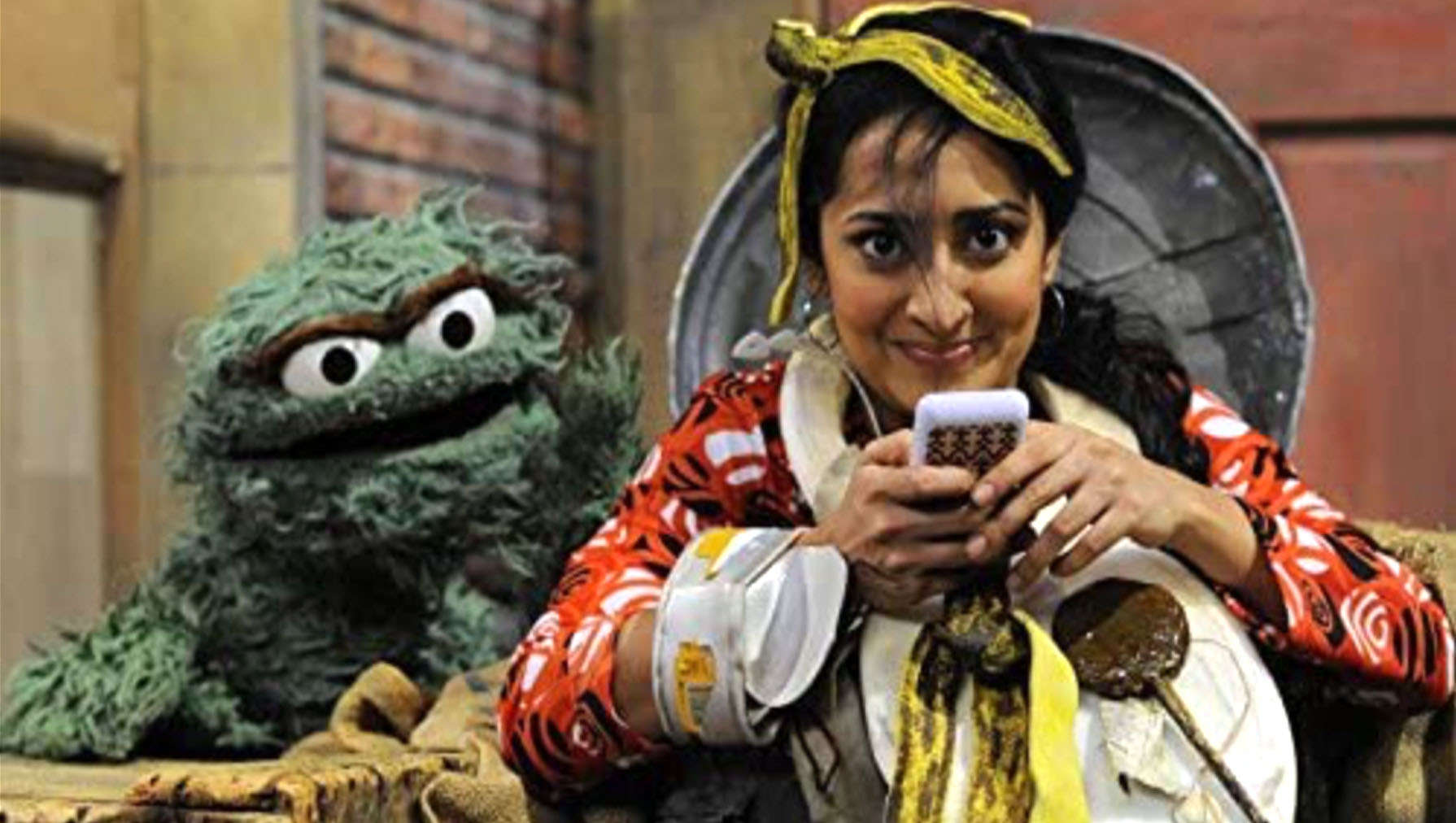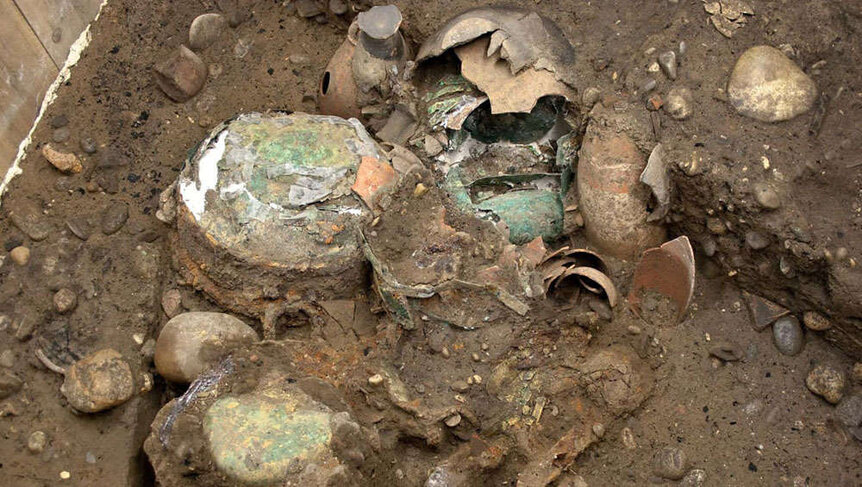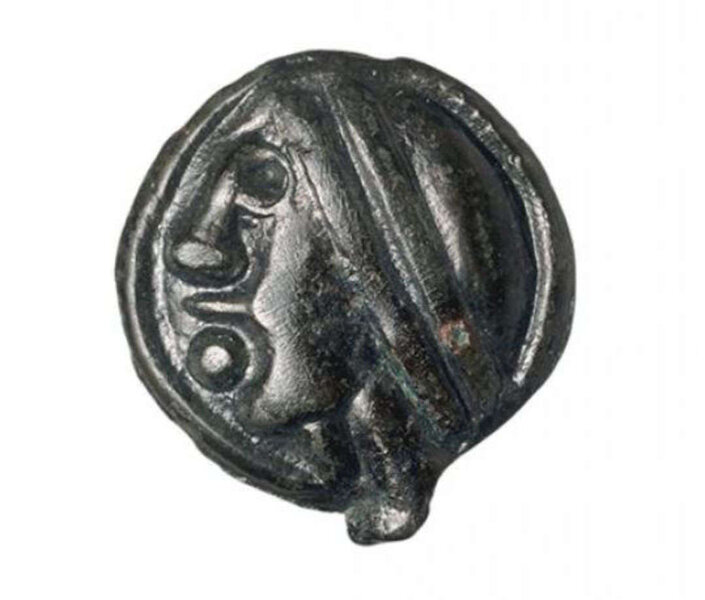Create a free profile to get unlimited access to exclusive videos, sweepstakes, and more!
Someone’s prehistoric trash could be our scientific treasure

Do you ever think that what you toss in the trash can tell future scientists how you lived thousands of years before?
Nobody really cares about the gum wrappers and apple cores they throw away, but scientists have now found that things prehistoric people trashed are a treasure trove of information about everyday life in an Iron Age settlement that existed in what is now Basel-Gasfabrik, Switzerland. Deposits of fossilized junk can actually tell us about various and often complex social practices, and even how people handled waste depending on what it was and where it came from. There was even supposed trash that was actually set aside to be used later.
"Based on the type of finds, we can barely determine whether the objects were stored as a potential resource or disposed of," archaeologist David Brönnimann, who coauthored a study recently published in PLOS ONE, told SYFY WIRE. "On the basis of the taphonomic overprinting, such as weathering indicators on the objects, we can, however, judge whether the objects were stored in a protected place or exposed to the weather and thus probably discarded. This is the reason why we have closely analyzed the taphonomic processes."
Prehistoric trash has been examined in the lab before, but never to this extent. Most studies would only find out a few things about a ceramic shard or a piece of bone before it ended up in the back room of a museum somewhere.
While tossing a wrapper is something you probably don’t take any time to think about, what the people who lived in the Basel-Gasfabrik site threw away gives insight into their social behavior. How trash makes it into the trash can — more like a pit or midden heap in ancient times — can tell archaeologists exactly how garbage was disposed of, and determining where it came from reveals what kind of resources people used the most. The taphonomic changes (which happen during the process of fossilization) in different materials can give away how the object they used to belong to was treated before the refuse went to the pit.
There were also some unexpected finds that gave away uses for things nobody would think of using the same way today, like what provided fuel.
"The biggest surprise for me, from a scientific point of view, was that some of the pits were filled with burnt herbivore dung," Brönnimann said. "We could find this out through microscopic analyses. These results show that dung was used as fuel within the settlement, which was previously unknown for the Iron Age in Central Europe. It can also be concluded that firewood was rare at that time, which suggests a landscape with little forest. All these conclusions can be drawn from the analysis of waste."
So what can finding out about the process of fossilization pull out of the trash? Brönnimann’s team found that objects which withstood the ravages of time were preserved so well because they were all thrown away quickly and not exposed to the elements. Those that were strewn near the top of a pit or heap didn’t end up in such great shape after nearly 2,500 years.
Taphonomic processes studied included the effects of being exposed or buried deeper. The presence of heat or water can also have a huge impact on how (and whether) something decomposes or fossilizes. Stress on an object from having more things packed on top of it can also affect how it holds up, and so can how it was deposited and what happened to it right after it was thrown away. How things were made had an impact, such as the amount of heat and fire that went into pottery. Where trash went can also make a difference. Things that ended up in mud were not going to fossilize the same way as those in drier ground.
There was also a better chance of preservation during colder temperatures than the hotter months, which could speak to what people used or ate during different seasons, and possibly the reasons why. How objects were used before their ultimate demise also affected how they held up. As Brönnimann found, their value when they were in use was something else that may have determined the care they were buried with and how well they ended up being preserved.
"The objects that we found in what might have been a ritual deposit probably had the greatest value," he said. "Several completely preserved ceramic and metal vessels were found, which must have had not only a material but also an emotional value."
Anything thrown away in the Basel-Gasfabrik site, which is near the Rhine river, was affected by the river’s gravel. The team studied a pit that showed it must have had an assist from a structure to help stabilize it, because that unstable gravel could mean it would collapse at any moment. Whatever that stabilizing structure was has been long gone. The team figured this pit must have been something of a storage or cellar pit because of the remnants of charcoal and a substantial number of objects that appeared to still be useful. In a strange turn, they also found the bones of frogs and other amphibians that probably fell into the pit and were unable to climb back out.
While the relics unearthed from ancient dump sites can give a fascinating look into the past, you probably don’t want to imagine the smell of a midden heap in the middle of the summer. Go back thousands of years, and you might have felt differently.
"For me, the most amazing and exciting discovery is that objects or materials that we consider dirty, disgusting or worthless today may have had a completely different value in other cultures," said Brönnimann. "For example, faeces were not just disgusting, but served as a resource for fertilizer, fuel or even in handicrafts. We must therefore never conclude from our own cultural imprint that of past cultures."




























